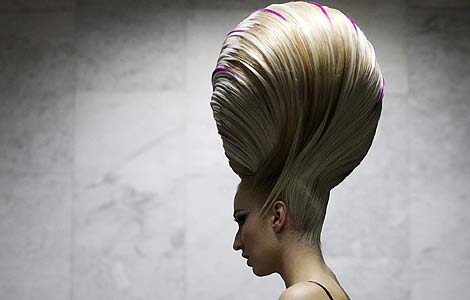A spring ritual that gave birth to a masterpiece
Updated: 2011-10-10 10:58
By Zhu Linyong (China Daily)
|
|||||||||
 |
|
A treasured copy of A Preface to the Orchid Pavilion Poems. |
Editor's Note: Every week we look at a work of art or a cultural relic that puts the spotlight on China's heritage.
On a sunny day in late April, AD 353, Eastern Jin Dynasty court minister and calligrapher Wang Xizhi (303-361) invited 41 calligraphers, poets, relatives and friends for an outing at the Orchid Pavilion in Shaoxing, Zhejiang province.
It was time for the spring purification ritual when people bathed in streams to ward off bad luck.
Wang and his friends and scholars each sat by a flowing stream, down which floated a little cup filled with liquor.
Whenever it passed someone, that person was obliged to improvise a poem, or drink the liquor, if he failed to come up with one.
At the end of the day, 37 poems were composed by 25 scholars.

Wang, as the initiator of this merry activity, picked up a brush made out of rat whiskers and hairs, and penned what is considered the greatest masterpiece of Chinese calligraphy, Lan Ting Ji Xu, or A Preface to the Orchid Pavilion Poems.
Written on silk in the style of xing shu (running script), the composition contains 28 vertical rows and 324 words.
It is an emotional yet philosophical discourse on the meaning of life, executed in superb brushwork.
Inspired by the happiness and grace of the moment, and brimming with energy and elegance, the whole piece was destined to become the best example of running script creations in history.
Although Wang tried to reproduce the work many times, he was never able to replicate its quality.
But thanks to it, Wang was counted among the nation's most esteemed calligraphers, especially during and after the Tang Dynasty (AD 618-907).
Tang emperor Taizong so admired Wang's calligraphy that he launched a nationwide hunt for Wang's works, and eventually seized the original A Preface to the Orchid Pavilion Poems from Wang's descendants.
The emperor asked a group of court artisans, led by Feng Chengsu, to make copies of the scroll on paper, and gave them to his favored ministers and generals as royal gifts.
Wang's original work is missing. Legend has it that the emperor buried it in Zhaoling, his mausoleum near Xi'an, Shaanxi province.
Meanwhile, many copies have survived. Many more in various mediums have been produced and circulated among calligraphy enthusiasts for centuries, according to Shan Guoqiang, a researcher with the Palace Museum in Beijing.
One of the copies, believed to be by Feng Chengsu, drew the attention of an array of scholars and emperors in dynastic China, who each wrote a comment to it or stamped a seal on it.
Done on rice paper, it is about 24.5 cm long and 69.9 cm wide. It is widely recognized as a top-quality copy as the artist tried to remain as true to the original as possible.
This scroll and other well-known copies of Wang's work are on display at the Palace Museum until Dec 5. The show presents some 200 exhibits, with 94 from the Palace Museum, and the rest from overseas museums.
"It is a rare opportunity for lovers of Chinese calligraphic art to have a close look at ancient masterpieces," says museum director Zheng Xinmiao.
Besides ancient copies of Wang's A Preface to the Orchid Pavilion Poems, the exhibits include exquisite artifacts, such as wood carvings, jade works, paintings and porcelain pieces, all inspired by the story of the gathering at the Orchid Pavilion more than 1,600 years ago.
"Growing admiration of Wang's calligraphic art fostered a so-called Orchid Pavilion Culture in feudal China that continues to this day," Shan notes.











